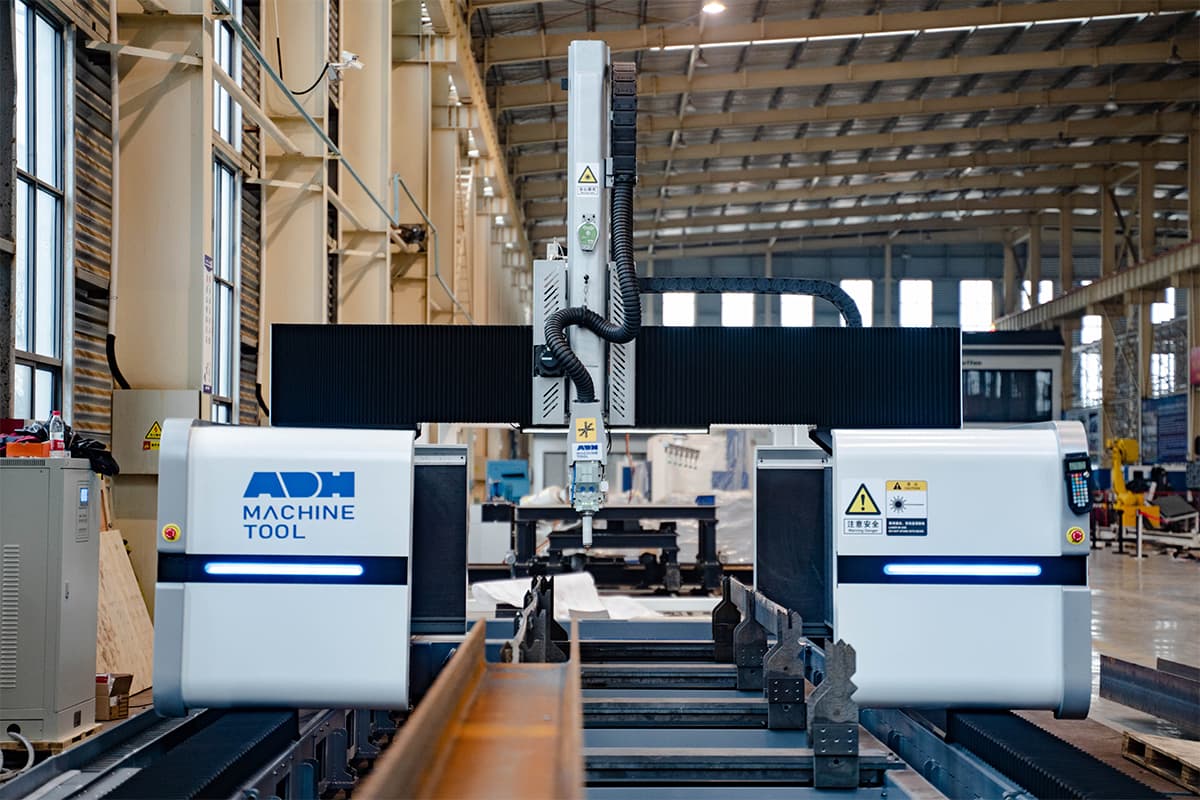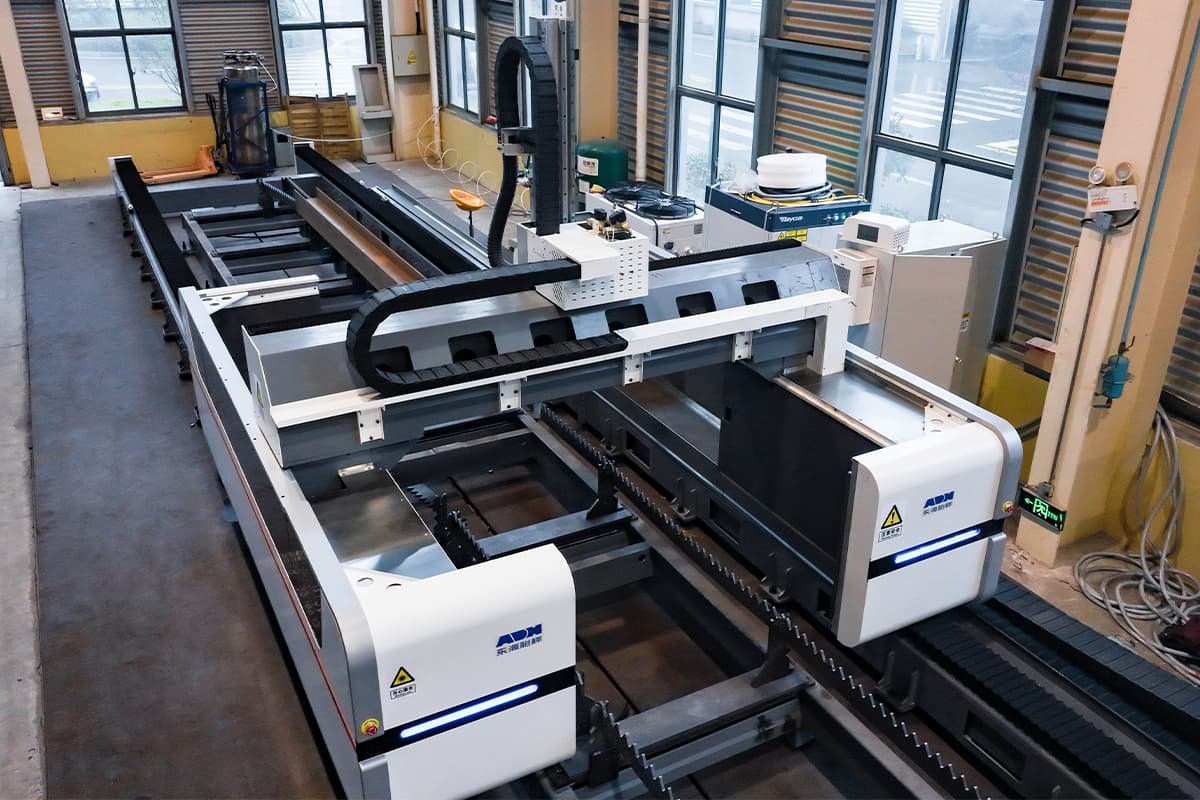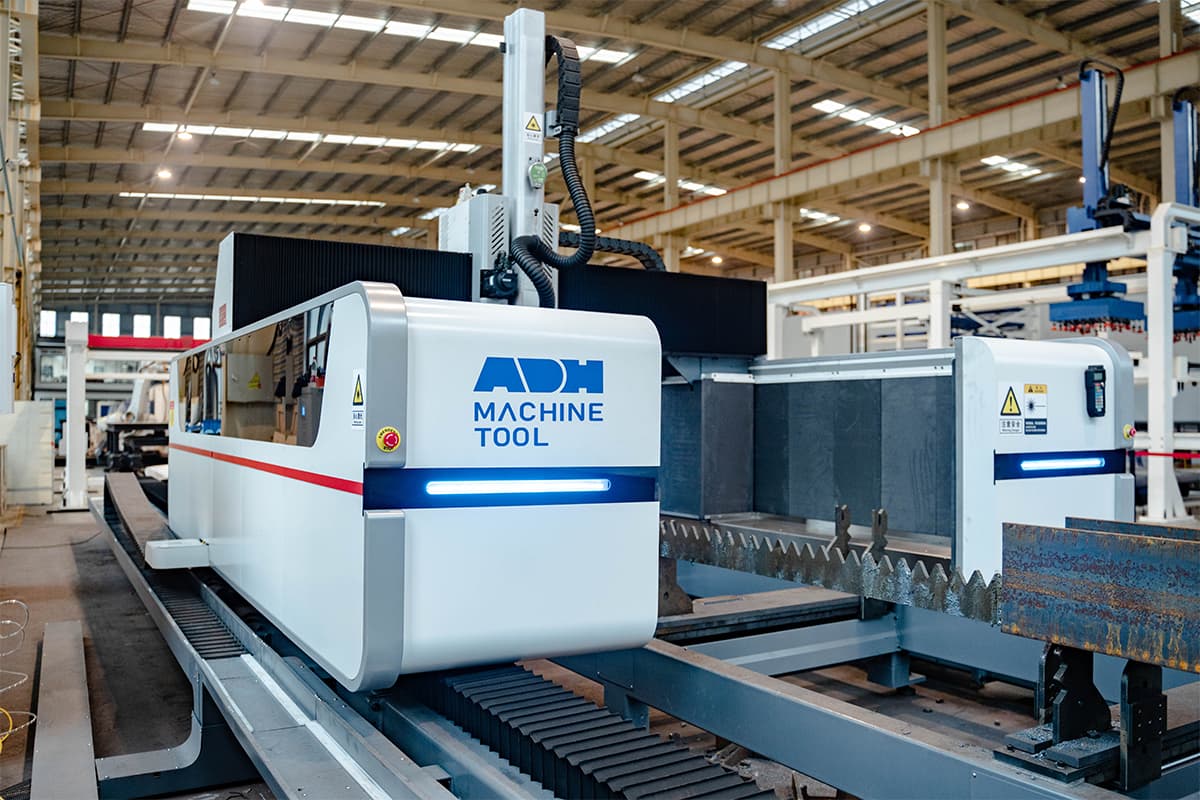With the development of technology in manufacturing, the laser cutting machine serves as one of the advanced methods of board cutting. A laser cutter focuses laser beams onto the surface of the workpiece through focusing lenses to melt the focused material. It utilizes assist gases coaxial with the laser beam to blow the melt. At the same time, the laser beam moves relative to the materials along certain paths to form silts in a certain shape. Technology development and increased costs widen the application of laser cutting machines. Flexibility and resilience enable the machine to process accurately and efficiently and become the top choice for many sectors. Their costs not only include purchasing, but include installation, training, maintenance and consumption. Therefore, it’s essential for enterprises that are considering investing in laser cutters to comprehensively learn their costs and return on investment. Thus, companies and individuals can maximize profits through proper budget planning and cost control. I invite you to enjoy a short video about the laser cutting machine, which will lay a solid foundation for further reading my article. Laser-cutting machines can be classified from multiple angles, including the type of laser, structural type, type of material being cut, power level, etc. The following is a classification of laser-cutting machines based on different criteria: 1. Classified by laser type: (1) CO2 laser cutting machines: They are suitable for cutting non-metal and some metal. Although their costs are reasonable, the price varies depending on the power, brand, and accessories. (2) Fiber laser cutting machine: They are mainly applied to cut metals and possess higher power, efficiency and speed. Therefore, their budgets are higher than those of CO2 laser cutters. (3) YAG laser cutting machine: Using solid-state lasers (such as Nd:YAG) is suitable for cutting both metals and non-metals. However, due to their lower efficiency, they have gradually been phased out by the market. 2. Classified by structure: (1) Gantry laser cutting machine: the laser is fixed, and the workpiece moves, suitable for large materials or heavy industry. (2) Cantilever laser cutting machine: the laser head is fixed at one end, suitable for small or medium-sized workpieces. (3) Robotic arm laser cutting machine: a robotic arm is used for laser cutting, and it is suitable for complex or three-dimensional cutting. 3. Classified by the type of cutting materials: (1) Metal laser cutting machine: they are suitable for cutting multiple metals, such as stainless steel and carbon steel. (2) Non-metal laser cutting machines: they cut wood, plastic, paper, and other non-metals. 4. Classified by the power: (1) Low-power laser cutting machine: suitable for thin materials or applications with low cutting requirements. (2) Medium-power laser cutting machine: suitable for medium-thickness materials, balancing cutting speed and equipment cost. (3) High-power laser cutting machine: used for thick materials or applications requiring high-speed mass production. 5. Classified by cutting bed width: (1) Standard Format Laser Cutter: suitable for cutting standard format materials. (2) Large Format Laser Cutter: suitable for cutting large format materials, such as large billboards, large metal sheets, etc. These classifications help users choose the appropriate laser cutter based on their specific cutting needs and application scenarios. Laser power directly affects cutting speed and the maximum thickness of material. The higher the power, the stronger the cutting capability and, accordingly, the higher costs. For example, when cutting the same material, fiber laser cutters of 3000w perform better than those of 500w in terms of speed and maximum thickness. Work area size decides the maximum size of materials to be processed. Larger work area size allows for improved flexibility and processing capability, which entails higher costs. For example, the price of a laser cutting machine with a 2x3 meter work area will be higher than that of a standard-sized workbench. Advanced functions, like a CNC control system, automatic focusing, and rotate attachment, can significantly improve quality and operation convenience. However, additional functions and accessories also add to the budget. Laser-cutting machines of high-end brands are famous for their excellent performance, reliability, and after-sale services. So, they also cost more. Economic machines may have an edge in initial costs in the short term. However, they entail increased costs caused by long-term maintenance and performance stabilizing. The selection of laser cutters should balance personal demands and budgets and consider the equipment's performance, efficiency, and long-term operating costs. Therefore, understanding how various factors affect the price of a laser cutter can help customers generate wiser selections. Entry-level machines are significantly different from industrial machines in terms of price and quality. These two kinds of machines are compared in detail as follows: Typical prices range from $2,000 to $10,000. The prices are favored by machine hobbyists, small enterprises, and light production. However, limitations are in speed, power, and material capabilities. Commonly, entry-level laser power ranges from 40w to 100w, and their maximum cutting areas are around 300x500mm. They are suitable for cutting wood, acrylic, fabric and other materials. But, for metal-cutting, they are limited. Despite the mediocre performance, cost-effective entry-level machines meet the basic demands of customers who are wondering about the laser cutting machines at the beginning of purchasing and selection. For anyone interested in laser cutting machines but with limited budgets, entry-level laser cutters are a wise choice. Typical prices range from $20,000 to $200,000. There is no doubt that higher prices always produce better quality. Industrial laser-cutting machines are designed for mass batches of production and high-demand manufacturing. Boasting higher speed, power, precision, and durability, their laser power can reach over 6000W, and maximum cutting areas are over 30x15m. They can cut multiple metals, like stainless steel, titanium alloy, and aluminum alloy, and they can easily cut non-metals, such as wood, acrylic, and fabric. Possessing a high-precise movement control system and high-quality optical components, their cutting precision can reach 0.01mm, which is far more accurate than that of entry-level machines. Obviously, the productivity of industrial machines is several times, even several tens of times higher than that of entry-level ones. Overall, entry-level machines with reasonable prices are suitable for small batches of production but are unsatisfactory in performance. While expensive industrial laser-cutting machines emerged as the unaltered choice for mass batches of production, relying on their excellent performance in manufacturing. But no matter whether they are in entry lever or for industrial use, customers should select the proper types based on actual demands and budgets. When purchasing laser-cutting machines, besides their own costs, additional expenses should be considered so as to ensure sound operation and maintenance. The installation and setup of a laser cutting machine are usually carried out and set up by professionals in the industry, which entails additional expenses. Installation fees vary according to machine type and installation complexity. Before installation, site preparation should be done. First, there should be a proper energy supply and electrical connection. Second, sufficient space and flat ground should be reserved. Last, proper ventilation is prepared for sorting out smoke and dust during cuttings. In addition, if the on-site conditions don’t meet the demands, additional renovation expenses are added to the whole budget. Only operators who are trained professionally and qualified can master the correct use and maintenance methods, which also adds expenses. Laser cutting machines entail regular maintenance and service to prolong their lifespan. Common maintenance incorporates: Optical components cleaning, such as focusing lenses and reflective mirrors; check and replacement of the filters; adjustment and calibration of the cutting heads and lubricating move components. All of that maintenance and service add labor and material costs. At the same time, breakdowns appear from time to time. For example, the damaged lasers, jogged cutting heads, broken move systems, and fault control systems. Obviously, repairment requires professional technicians, so relative fees for labor and components need to be considered. Some core components worn and aged during cutting should be replaced. The service life of CO2 laser cutters is around 2000h. The focusing lenses are polluted by dust and smoke and should be replaced regularly. The reflective mirrors: when the reflection rate decreases, they should be replaced. The cutting heads will be worn for long-term use, weakening cutting quality. Fees for consumables and replacement parts are added according to their use time. In addition, assist gases like oxygen and nitrogen entail long-term investments. Therefore, when estimating the hostile costs, you should also consider additional expenses caused by installation, settings, training, maintenance, consumables and replacement parts in order to make the most intelligent choices. According to cutting application scenarios, including material, thickness, size and accuracy, choose the suitable laser powers, cutting heads and workbench areas. Based on production scales, estimate automation level, loading and unloading demands to meet the requirements of productivity. A proper range of costs should be listed. Entry-level laser cutters cost around 2,000 to 10,000 dollars and industrial machines cost around 200,000 to 2000,000. Research about the mainstream laser cutters should be done. You should prioritize brand reputation and comprehensive after-sale services, like TRUMPF and ADH Machine Tool. Get quote. A holistic understanding of prices, equipment parameters and additional expenses lays a foundation for accurate comparison. Field investigation and on-site cutting trials are crucial for the judgment of the machine's performance. If conditions are not given, case videos and samples are also okay. Both initial investments and long-term operation expenses should be considered. Labor costs include the wages of operators and programmers. Consumables include cutting gases, lasers, focusing lenses, and other prone-worn components. Energy consumption includes electricity bills and cooling water bills. Maintenance incorporates regular service and breakdown repairments. Comprehensive estimation of the machine costs for the whole life cycle promotes the selection of the most cost-effective machines. Pay attention to manufacturers' promotional activities, such as exhibition discounts and peak season promotions, sometimes you can enjoy significant discounts. Moderate bargaining avoids influencing the quality of the laser-cutting machines. When choosing package deals, you should remember that the combination of bundling equipment, accessories, consumables, and services generally offers better value for money. Laser cutting machines, as machines of high precision, regard quality and stability as foundations. As for key applications, choosing low-quality products for the sake of temporary low prices should be avoided so as not to affect production. Because premium products feature high accuracy, stability and low breakdown rates, so they are economic for long-term utilization. Requirements for regular maintenance: decide that you should choose brands with convenient maintenance and in-time responses. You should know that consumables are normal payments, so the consumable costs should be emphasized in order to select consumables at a reasonable price. If companies’ demands are changing, laser cutters with flexibility, resilience and room for improvement should be chosen so that they can keep up with the pace of demand growth. Based on what I have described, you must have grasped the factors that should be considerd while purchasing. It’s suggested that comprehensive inspections and comparisons should be done to select the most cost-effective products and maximize long-term benefits. Remember, low expense is not the only factor that needs to be considered, but premium and reliable products. In the article, factors influencing the cost of the laser cutting machines are listed and discussed in detail so as to serve as a reference for readers who are wondering about the laser cutting machines. Customers in need of procurement should estimate the cutting application demands thoroughly and carefully. Don't pursue high-end machines blindly or just aim for low costs. It’s critical for enterprises and individuals to select suitable laser cutters to win in market competition and promote productivity. ADH Machine Tool boasts a four-decade history of laser cutting machine R&D and is one of the largest exporters in China. Our laser cutting machines enjoy high quality, accuracy, efficiency, and brand reputation. Don’t hesitate to browse our product page. We will never disappoint you. Download the Infographic With High Resolution Gear Pump,Hydraulic Gear Pump,Gear Hydraulic Pump,Hydraulic Gear Oil Pump HUAIAN YATAI HYDRAULIC MACHINERY CO., LTD , https://www.yataihydraulic.comI. Introduction
II. Factors Affecting Laser Cutting Machine Cost
Type of laser
Laser power
Work area size
Features and accessories
Brand reputation and quality

III. Price Ranges for Different Laser Cutter Types
Type Price Power range Applicable materials/sectors CO2 laser cutting machine Entry-level: < $5,000 40-80W thin non-metals, such as acrylic, wood and fabric. Mid-range:$5,000 - $20,000 100-150W small batch of non-metals Industrial > $20,000 Hundreds of watts. batch of cutting for advertising, cloth, and packaging Ultra-high power: tens of thousands of dollars Thousands of watts. thick board, auto interior decors and aerospace components. Fiber laser cutting machine Entry-level: $10,000 - $30,000 500-1000W thin metals for hardware and advertising. Industrial: > $30,000 Thousands of watts heavy sheet metal processing Ultra-high power: tens of millions of dollars tens of thousands of watts automobile manufacturing and heavy machinery, cutting thick plates and high-strength alloys IV. Entry-Level vs. Industrial Machine Costs
Entry-level machines
Industrial machines
V. Additional Expenses to Consider
Installation and setup costs
Maintenance and repair
Consumables and replacement parts

VI. Tips for Getting the Best Value
Assess your needs and budget carefully
Research and compare multiple options
Consider long-term costs, not just upfront price
Look for promotions, discounts, and package deals
Invest in quality and reliability for critical applications
Factor in maintenance, consumables, and growth potential

VII. Conclusion
